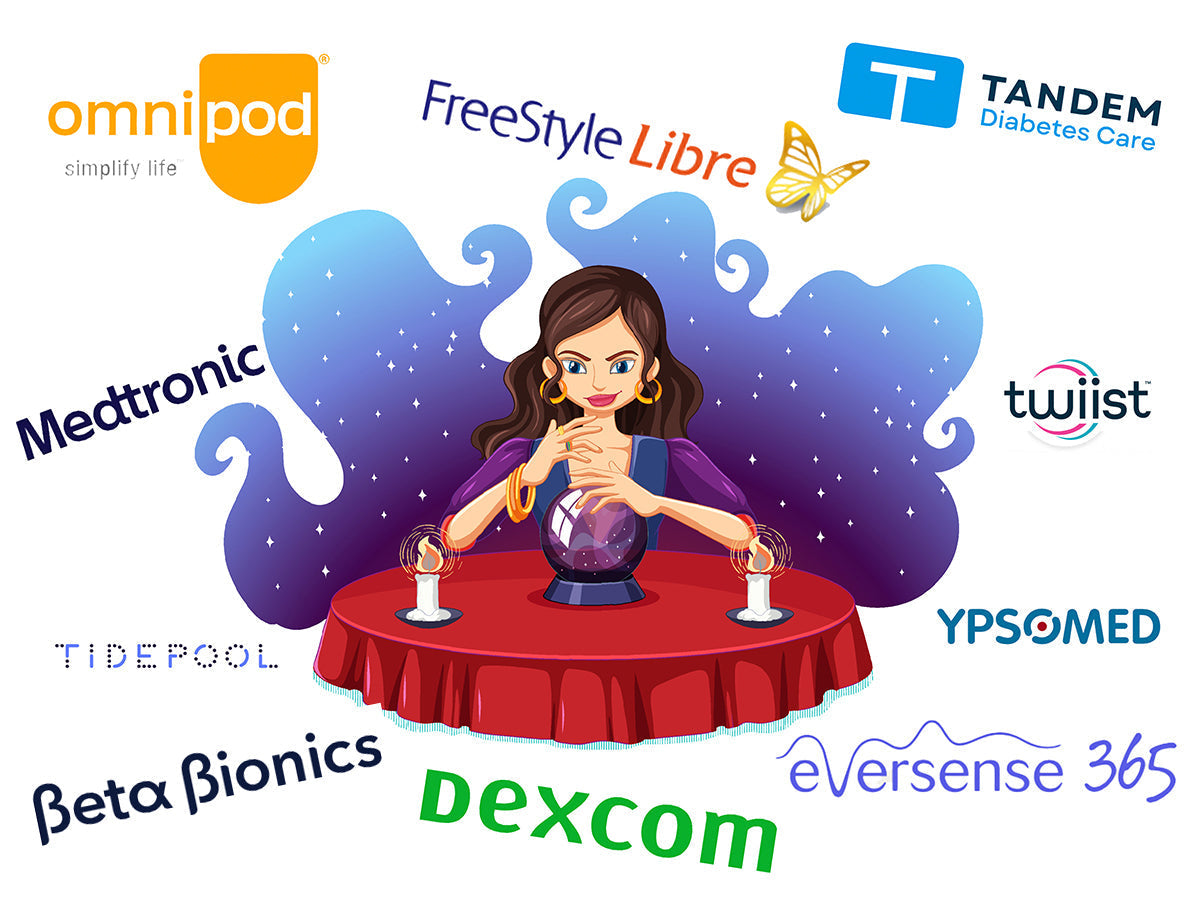
Insulin manufacturer, Sanofi - who produce Lantus - this week followed Eli Lilly and Novo Nordisk in announcing a reduction in the price of insulin in the USA.
The three manufacturers account for producing around 90% of the world’s insulin and have come under increasing criticism for the almost astronomical prices rises over the past decade. Some PWD in the USA have seen price increases of over 500% in less than 10 years and a 2020 survey found that globally 1 in 4 T1Ds have rationed their use of insulin, skipped doses or gone without altogether, endangering their health.
This is despite the fact that the discoverer of insulin, Frederick Banting, is famously quoted as stating that “insulin does not belong to me, it belongs to the world”.
Although the price reductions apply in the USA, these are very likely to have positive repercussions in the global price of insulin affecting many more PWD.
In this blog, we consider what’s happened, why and how this could be an important step for ensuring that affordable insulin is available to more PWD in the global diabetes community.
We also list 10 key related facts, which may surprise you.
***
What did the manufacturers announce?
On 1st March 2023, Eli Lilly surprised the pharmaceutical industry, market investors and wider diabetes community with an announcement that it was cutting the list price of insulin by 70%. This will apply to Humalog and Humulin from the later part of 2023. The company will also lower the price of its non-branded insulin to $25 a vial - some insulins in the USA are currently sold for nearly $300 for a vial (about a month’s supply).
Then on 14th March Novo Nordisk declared that the list price of Novolog would be reduced by 75% and Novolin and Levemir by 65% from 1st January 2024.
Sanofi quickly followed the Novo Nordisk announcement and will cut the price of Lantus in the USA by 78% and cap the out-of-pocket cost at $35 for patients with commercial insurance. The price changes will come into effect from 1st January 2024.
|
SUMMARY OF CHANGES BY ELI LILLY |
|
Insulin products: Basalgar; Humalog; Humulin N; Humulin R; Insulin Lispro; and Lyumjev. |
|
|
SUMMARY OF CHANGES BY NOVO NORDISK |
|
Insulin products:Novolog; Novolin; and Levemir. |
|
|
SUMMARY OF CHANGES BY SANOFI |
|
Insulin products: Lantus, Apidra |
|
***
Why have the 3 manufacturer’s reduced prices?
There appear to be four key reasons for manufacturers reducing their prices.
1. Patient advocacy
For years, PWD and advocacy groups in the USA (and other diabetes communities) have been speaking out about the escalating costs of insulin and calling for action by the government to help with the financial burden of affording the life-saving drug.
The Executive Director of Patients For Affordable Drugs, an independent national patient organisation in the US, declared “this win is thanks to the relentless pressure and years of activism by patient advocates combined with political momentum”.
2. Legislative changes
In President Joe Biden’s State of the Union address in February 2023, he was highly critical of the pharmaceutical industry for “unfairly charging people hundreds of dollars —and making record profits” from the sale of insulin. He called for Congress to “cap the cost of insulin at $35 a month for every single American who needs it”.
This follows legislative changes that come into effect from the start of 2024 which could see insulin manufacturers facing significant penalties for high pricing relating to Medicaid patients, and so may be a reason the manufacturers have chosen to announce the price changes now.
3. Increasing competition
Another factor explaining the moves by the three main insulin manufacturers is that competition in the market is increasing with the availability of more generic insulin at a lower cost.
One means of challenge to the dominance of these insulin manufacturers is an initiative by the State of California whose Governor this week (17 March 2023) announced a $50 million deal with non-profit drugmaker Civica. The aim is to develop a generic insulin under the state’s own label and sell this for $30 a vial – the same cost it will cost the State to manufacture and distribute the drug.
4. Corporate social responsibility
Finally another possible reason for price reductions is that through their actions, these corporations are seeking to demonstrate their corporate social responsibility to the health and well-being of the diabetes community.
When announcing the price cuts, Eli Lilly’s Chief Executive stated that the company’s goal is to “help Americans who may have difficulty navigating a complex healthcare system that may keep them from getting affordable insulin.”
Sanofi also sought to claim that they were listening to “better understand additional actions we could take to address access or affordability challenges”.
The impact of price reductions
One enduring consequence of the COVID-19 pandemic is that globally there is wider awareness and recognition of the importance of access to affordable healthcare. This has particular resonance for vulnerable populations in low and middle-income countries, who have often been unable to access or afford medications such as insulin.
Following the pandemic some pharmaceutical manufacturers have started to take steps to improve accessibility for their products and price reductions such as those announced by the insulin manufacturers have the potential to bring significant benefit to those living in low- and middle-income countries where the cost of insulin can be prohibitively expensive, if unavailable at all.
If, as hoped, that there is a ripple effect then it could in turn mean an increasing number of PWD will get access to diabetes-related medication, which in time is likely to lead to fewer complications and improved health for PWD on a global scale.
And as well as insulin, the price reductions may encourage other pharmaceutical manufacturers to follow suit and reduce the cost of related products such as test strips. This could lead to broader changes in the pharmaceutical industry and greater access to affordable medications for all.
The Future
Whilst pressure on manufacturers to address the escalating costs has grown significantly in recent months, it's also notable that the reality is that profits for the manufacturers from insulin have fallen. Newer insulins are now coming on to the market and there is currently a substantial push to make lower cost insulins available to reach more PWD.
The high price of insulin in the US is not only a burden for people with diabetes in the US, but it is also a problem for people with diabetes around the world. This is because prices in the US can often be a driver of prices elsewhere. For this reason pharmaceutical companies often use the prices of insulin in the US as a benchmark for setting the prices of insulin in other countries.
By lowering the price of insulin in the US it is hoped that the knock on effect will be that more PWD have access to not only insulin, but other diabetes supplies, equipment and treatment too.
***
FACT FILE
Diabetes Globally
- The International Diabetes Federation (IDF) 2021 Digital Atlas reports that there are around 537 million people living with diabetes worldwide (all types).
- The IDF report states that 3 in 4 adults with diabetes live in low- and middle-income countries and prevalence has been rising more rapidly than in higher-income countries.
- Insulin and test strips are not covered by health insurance in many countries, and this is more common in low and middle-income countries.
- In these low- and middle-income countries approximately 1 in 2 people with diabetes do not have access to the insulin they need. This often leads to poor outcomes for PWD.
- A lack of healthcare infrastructure and trained healthcare professionals in some parts of the world can also limit access, not just to insulin but related equipment and medications too.
- Between 2000 and 2019, there was a 3% increase in mortality rates from diabetes by age. In lower-middle-income countries, the mortality rate due to diabetes increased by 13%.
- China represents a large diabetes market with about 120 million patients.
Diabetes in the USA
- According to the American Diabetes Association 8.4 million (of the 37 million PWD) Americans depend on insulin to survive.
- The list price of Lantus in the USA is currently $292.07 (March 2023) yet was only $34.81 in 2001.
- The cost to manufacturers to produce a vial of insulin is estimated to be between $2-$10 although this doesn’t take into account other costs such as capital expenditure, quality assurance and control, registration costs, and costs for adhering to manufacturing regulations etc.
***
Note
The healthcare system in the USA is complex and confusing to those outside of the system and not directly affected. There is a mixture of insurance schemes which can vary depending on the state of residence as well as patient-assistance programs and affordability options. Other important factors that have a bearing are whether a PWD has insurance, what type of plan they have and the level of cover. The type of medication and amount needed can also be a consideration. Intermediaries in the insulin supply-chain are one reason drug prices have been driven up in recent years.
***
Disclaimer
Content here and on our website www.lovemylibre.com does not constitute medical advice or replace the relationship between you and healthcare professionals nor the advice you receive from them.
The author of this blog has type 1 diabetes and uses the FreeStyle Libre 2 which is provided on NHS prescription. We do not have any affiliate relationship with Eli Lilly, NovoNordisk, Sanofi or any 3rd party mentioned. All trademarks are the intellectual property of their respective owners.






Leave a comment (all fields required). Please note, we are unable to respond to individual comments posted here.